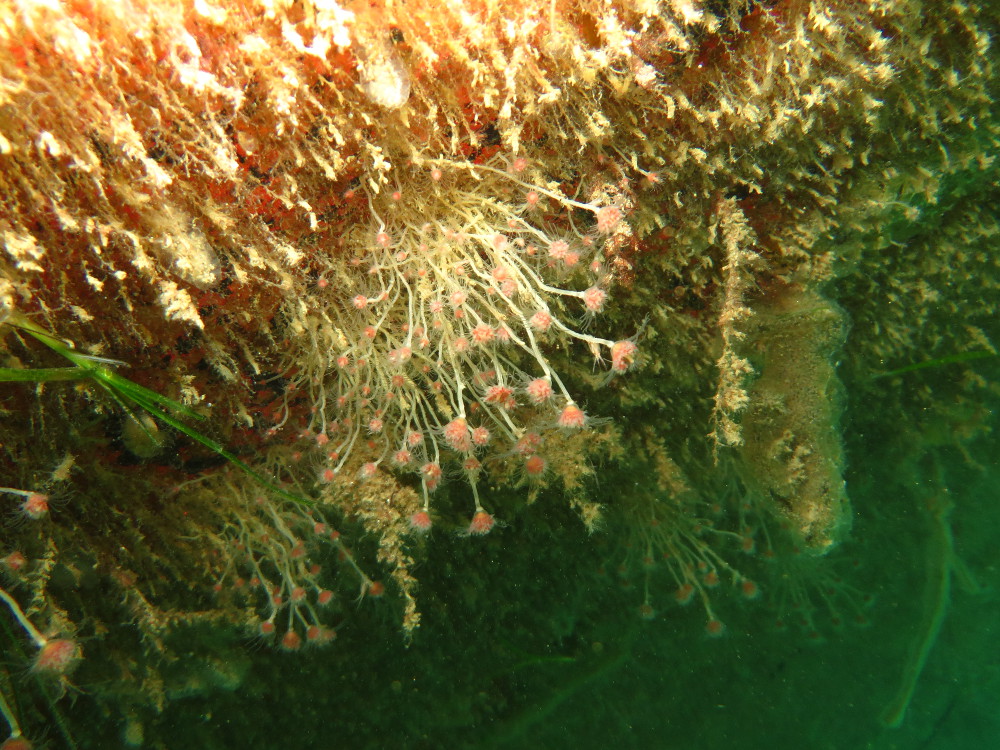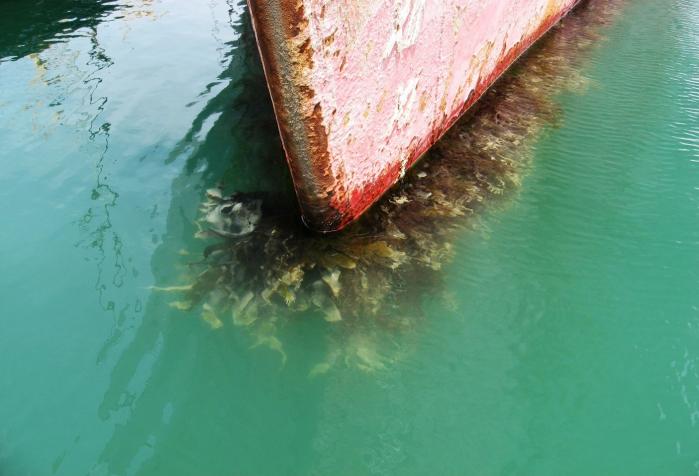Testing framework and performance standards for in-water removal or treatment of vessel biofouling

In-water cleaning or treatment systems can be used to manage biofouling in the interval between dry-docking a vessel (often up to 5 years). However, use of these systems also carries some residual environmental risk that must be managed. This can include release of viable non-native organisms and contaminants from the vessel's antifouling coatings into the surrounding environment.
This project reviewed the range of technologies that are currently available for in-water cleaning and some that are still in development. The review informed the development of a testing framework and standards for evaluating the performance of in-water systems to obtain approval from the Ministry for Primary Industries (MPI) for use in New Zealand. The testing framework was developed for three generic types of systems:
- removal ("cleaning") of vessel biofouling,
- treatment of vessel biofouling and
- filtration or treatment of removed waste.
It covered manual and mechanical cleaning methods, surface treatments and shrouding technologies. The framework requires systems to be tested on biofouling present on actual vessels and for the outcomes of the testing to be assessed against specified performance standards. Tests should be realistic simulations of the intended use of the system on a vessel. The testing framework will allow consenting authorities (both government and non-government) to make informed decisions regarding the biosecurity risk of in-water systems for removal or treatment of vessel biofouling.

[Image: Chris Woods, NIWA]
Additional Reading
- Growcott, A., Kluza, D., Georgiades, E. (2019).Technical advice: Evaluation of in-water systems to reactively treat or remove biofouling within vessel internal niche areas. MPI Technical Paper No. 2019/02. 102 p. ISBN No: 978-1-98-859419-4 [PDF 2 MB]
- Ammon, U.; Swift, L.; Brand, S.; Jeffs, A.; Swift, S. (2018). Review of in-water hull encapsulation and enclosure treatments for eliminating marine biofouling. MPI Technical Paper No: 2019/06. 63 p. ISBN No: 978-1-98-859441-1 [PDF 635 kb MB]
- Growcott, A., Kluza, D., Georgiades, E. (2017). Review: In-water Systems to Reactively Manage Biofouling in Sea Chests and Internal Pipework. Marine Technology Society Journal 51(2): 89-104. Copyright - The Marine Technology Society, for personal use only, not to be distributed in any format [PDF 316 kb]
- Morrisey, D., Inglis, G., Tait, L., Woods, C., Lewis, J., Georgiades, E. (2015). Procedures for evaluating in-water systems to remove or treat vessel biofouling. MPI Technical Paper No: 2015/39. 56 p + Appendices. ISBN No: 978-1-77665-129-0 [PDF 2.3 MB]
- Morrisey, D., Woods, C. (2015). In-water cleaning technologies: Review of information. MPI Technical Paper No: 2015/38. 38 p. + appendices. ISBN No: 978-1-77665-128-3 [PDF 1.1 MB]
Related Content
- Morrisey, D.; Gadd, J.; Page, M.; Floerl, O.; Woods, C.; Lewis, J.; Georgiades, E. (2013). In-water cleaning of vessels: biosecurity and contamination risks. MPI Technical Paper No: 2013/11. 267 p + Appendices. ISBN No: 978-0-478-41458-5 [PDF 2.8 MB]
- Bohlander, J. (2009). Review of options for in-water cleaning of ships. MPI Technical Paper No: 2009/42. 38 p. ISBN: 978-0-478-35748-6 [PDF 1.4 MB]
-
Enclosure treatment: A biosecure treatment for oil rig pontoons (2009). MPI Technical Paper No: 2009/40. 43 p. ISBN: 978-0-478-35743-1 [PDF 1.5 MB]
-
A yacht enclosure system to mitigate biosecurity risks associated with biofouling (Developed IP Report). (2009) MPI Technical paper No: 2009/41. 18 p. ISBN: 978-0-478-35746-2 [PDF 175 kb]
- Hopkins, G., Forrest, B., Coutts, A. (2008). Determining the efficacy of incursion response tools: Rotating brush technology (coupled with suction capability). MPI Technical paper No: 2009/39. 65 p. ISBN 978-0-478-35722-6 [PDF 2.1 MB]
-
Floerl, O., Norton N., Inglis, G., Hayden, B., Middleton, C., Smith, M., Alcock, N., Fitridge, I. (2005).Efficacy of hull cleaning operations in containing biological material I. Risk assessment. MPI Technical paper No: 08/12. 78 p. ISBN: 978-0-478-32196-8 [814 kb]
- Woods, C., Floerl, O., Fitridge, I., Johnston, O., Robinson, R., Rupp, D., Davey, N., Rush, N., Smith, M. (2007). Efficacy of hull cleaning operations in containing biological material II. Seasonal variability. MPI Technical paper No: 08/11. 116 p. ISBN 978-0-478-32191-3 [1.1 MB]
Key Contacts
| Chris Woods | Graeme Inglis | Eugene Georgiades |
| Principal Investigator | Principal Investigator | Technical Liaison |
| NIWA | NIWA | Ministry for Primary Industries |
| [email protected] | [email protected] | [email protected] |